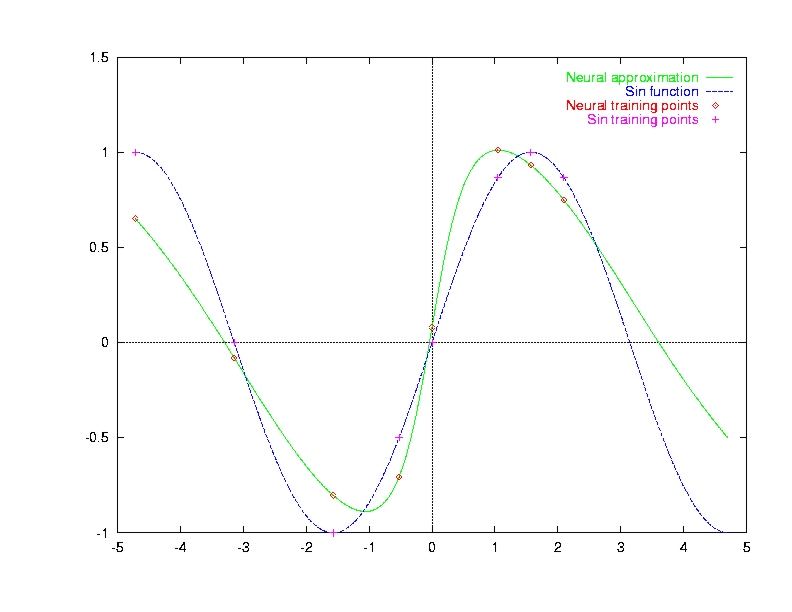gcc -o neural neural.c -lmand the resulting executable will be called
neural.
When run, neural will train a neural network to
approximate the sine function, and plot a comparison of the
network output and the actual sine function values. The
program should automatically display a graph that looks like
this:

The default values are for the network to have 10
HIDDEN nodes in one hidden layer, and to train
for 2000 ITERATIONS. These parameters are
defined near the top of the code.
Notes:
- As written, this code must be run on a UNIX workstation. You probably will have to make some modifications if you want to run it on a Windows machine.
HIDDEN nodes is actually too many. Reduce the
number of hidden nodes to try to determine the effect of
having fewer nodes.
In particular, answer the following questions (10 points each).
- What is the effect of reducing the number of hidden nodes?
- Does there appear to be a minimum number of hidden nodes for the network to satisfactorily approximate the sine function?
- What, if any, appears to be the relationship between the
number of hidden nodes and the amount of training
(i.e. the number of
ITERATIONS, required for the network to adequately represent the sine function? - What seems to be the optimal number of
HIDDENnodes, i.e. the smallest number that adequately approximates the function and does not require a very long time to train?
for loop so that several periods of the sine
function are plotted to verify that the network only
approximates the function well around the points on which it was
trained.
- predicting the weather,
- predicting the stock market,
- predicting the outcome of sporting events,
- etc.